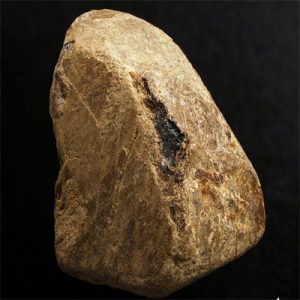Euxenite
Euxenite-(Y) is a very unusual mineral that is radioactive belongs to the Polycrase Group of minerals that includes Euxenite-(Y), Polycrase-(Y) and Yttrocrasite-(Y). Due to the earth that is unusual in its structure, Euxenite is one of several minerals called “Rare Earth Oxides”. Other earth that is rare such as Aeschynite, Fergusonite and Samarskite have very similar properties to Euxenite and are often related to each other. Faceted gems that are euxenite extremely uncommon and actually only faceted as a collector’s oddity. Euxenite is a mineral that is mildly radioactive should be kept away from other gems and minerals which can be subject to harm from radioactivity and of course human exposure must certanly be limited!
There are numerous localities that are euxenite. In Norway, from Jölster, Söndfjord; at Alve, on Tromö Island; on Hidra (Hitterö) Island, near Flekkefjord; at many other places between Tvedestrand and Arendal, and in Iveland and Evje Parishes, Sätersdal. In Sweden, within the Ruoutevare Fe–Ti deposit, near Kvikkjokk, Norrbotten; at Ytterby, on Resarö Island, near Vaxholm; and elsewhere. From Huntila, Pitkäranta district, Lake Ladoga, Karelia, Russia. In Madagascar, large crystals from Vohimasina; Ambatofotsikely; Ankazobe, near Ambohitantely; Ambolotara; Ranomafana; and elsewhere. In Brazil, from Santa Clara, Pomba, and Espirito Santo, Minas Gerais. In Canada, from Lyndoch, Sabine, and Mattawan Townships, and somewhere else in Ontario; also in Quebec. The Nanco pegmatite, Bedford County, and others in Virginia; from Morton, Delaware County, Pennsylvania; at Encampment, Carbon County, Wyoming; from Guffey, Park County, near Bergen Park, Jefferson County, together with Colorado feldspar pegmatite, Fremont County, Colorado in america, from the Rutherford pegmatite, Ameli a county.
| Category: | Oxide minerals |
| Chemical Formula: | (Y,Ca,Ce,U,Th)(Nb,Ta,Ti)2O6 |
| Yttrium Calcium Cerium Niobium Tantalum Titanium Oxide | |
| Molecular Weight: | 392.28 gm |
| Composition: | Calcium | 2.04 % | Ca | 2.86 % | CaO |
| Cerium | 3.57 % | Ce | 4.18 % | Ce2O3 | |
| Yttrium | 15.86 % | Y | 20.15 % | Y2O3 | |
| Tantalum | 18.45 % | Ta | 22.53 % | Ta2O5 | |
| Titanium | 2.44 % | Ti | 4.07 % | TiO2 | |
| Niobium | 33.16 % | Nb | 47.43 % | Nb2O5 | |
| Oxygen | 24.47 % | O | |||
| 100.00 % | 100.00 % | = TOTAL OXIDE |
| Crystallography: | Orthorhombic – Dipyramidal (Metamict – mineral originally crystalline, now amorphous due to radiation damage) |
| Crystal Habit: | As stout prismatic crystals, to 10 cm, may be flattened || [100] or [010]; commonly in parallel, subparallel, or radiating aggregates; compact massive. |
| Twinning: | Common on {201}; rare on {101} or {013} |
| Cleavage: | None |
| Fracture: | Conchoidal to Sub-Conchoidal |
| Tenacity: | Brittle |
| Moh’s Hardness: | 5.5 – 6.5 |
| Density: | 5.30 – 5.90 (g/cm3) |
| Luminescence: | None |
| Radioactivity: | Mild; GRapi = 3,420.62 (Gamma Ray American Petroleum Institute Units) |
| Color: | Black, Brownish Black, Greenish Black; Brown to Yellow-Brown in transmitted light |
| Transparency: | Opaque, Translucent on thin edges |
| Luster: | Vitreous to Sub-Metallic, Waxy to Resinous on fractures |
| Refractive Index: | 2.06 – 2.24 Isotropic; R1–R2: (470) 13.7–15.6, (546) 13.0–15.6, (589) 12.5–15.0, (650) 12.4–15.0 |
| Birefringence: | 0.000 Isotropic |
| Pleochroism: | None |


